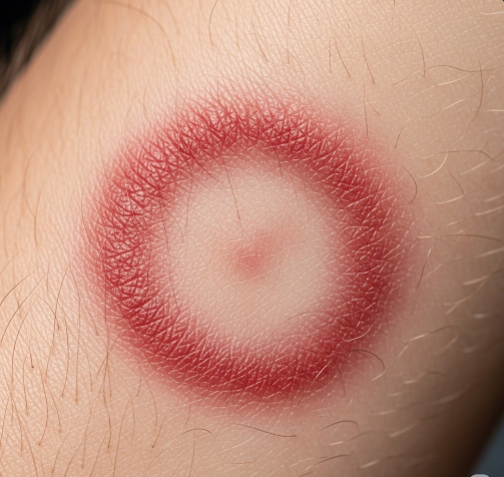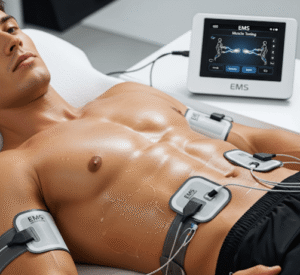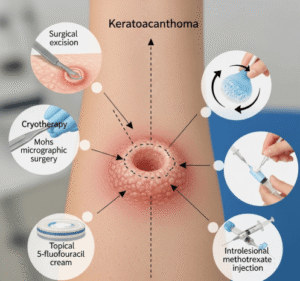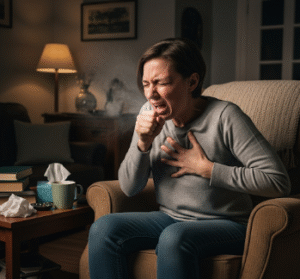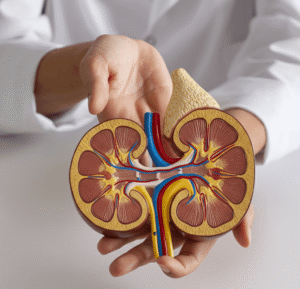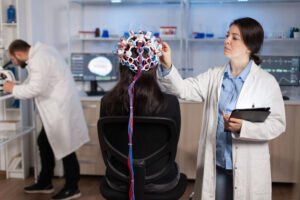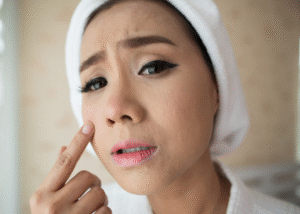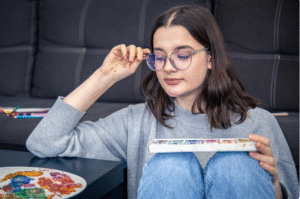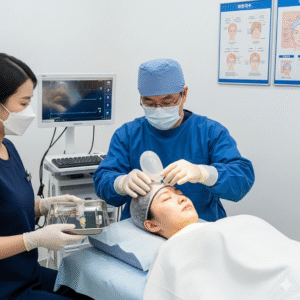Overview
Tinea, commonly referred to as ringworm, is a fungal infection of the skin caused by dermatophytes, a group of fungi that thrive on keratin found in the skin, hair, and nails. The infection is highly contagious and can spread through direct contact with an infected person, animal, or contaminated surfaces. In South Korea, tinea infections are frequently diagnosed in both urban and rural populations, with dermatologists providing advanced diagnostic tools, effective topical and systemic treatments, and preventive guidance to manage and contain outbreaks. Public awareness campaigns also emphasize hygiene, early treatment, and avoiding cross-contamination.
What is Tinea?
Tinea refers to a group of superficial fungal infections that affect different areas of the body. Each type of tinea is named according to the area it affects:
- Tinea corporis: Ringworm on the body
- Tinea capitis: Scalp infection, common in children
- Tinea pedis: Athlete’s foot, affecting the feet
- Tinea cruris: Jock itch, affecting the groin area
- Tinea unguium (onychomycosis): Fungal infection of the nails
- Tinea barbae: Infection of the beard area
The fungi responsible for tinea infections can survive on skin scales, hair, and clothing, making the infection highly transmissible. In Korea, dermatologists emphasize proper identification of tinea type to provide targeted treatment and prevent recurrence.
Symptoms
Symptoms of tinea infections depend on the affected body area but generally include:
- Red, scaly, and itchy patches of skin
- Circular or ring-shaped lesions with raised edges
- Blistering or oozing in severe cases
- Hair loss in affected scalp areas
- Thickened, brittle, or discolored nails in nail infections
- Discomfort, burning, or pain in severe infections
Symptoms can vary in intensity, and chronic infections may lead to secondary bacterial infections. Early recognition is crucial for effective management in South Korea.
Causes
Tinea infections are caused by dermatophyte fungi that thrive on keratinized tissue. Key factors include:
- Direct skin-to-skin contact with an infected individual or animal
- Contact with contaminated surfaces, such as locker rooms, showers, or clothing
- Warm and humid environments, which promote fungal growth
- Compromised immune system or chronic illnesses
- Poor personal hygiene or excessive sweating
- Wearing tight, non-breathable clothing that traps moisture
Korean dermatologists assess lifestyle and environmental factors to identify sources of infection and implement effective treatment plans.
Risk Factors
Certain factors increase the likelihood of developing tinea infections:
- Participation in sports or communal activities with frequent physical contact
- Living in humid or crowded environments
- Sharing personal items such as towels, combs, or shoes
- Diabetes or other conditions that weaken immune defenses
- Children and elderly individuals, who may have more susceptible skin
- Occupations with frequent exposure to moisture or animals
In South Korea, preventive measures focus on high-risk populations, including athletes, children, and healthcare workers.
Complications
While tinea infections are typically superficial, untreated cases can lead to complications:
- Secondary bacterial infections due to scratching
- Spread of infection to other parts of the body or to other individuals
- Permanent nail damage or deformities in onychomycosis
- Scarring or pigmentation changes in severe or chronic infections
- Psychological and social impact due to visible skin lesions
Korean clinics emphasize prompt treatment to minimize complications and prevent transmission in communal settings.
Prevention
Preventive strategies focus on hygiene, environmental control, and minimizing exposure:
- Maintain cleanliness: Regular washing and thorough drying of skin, especially in moisture-prone areas
- Avoid sharing personal items: Towels, clothing, combs, or footwear
- Use breathable clothing: Cotton fabrics and moisture-wicking materials
- Environmental hygiene: Disinfect shared surfaces and keep communal areas dry
- Foot protection: Wear flip-flops in public showers or pools
- Prompt treatment: Address minor fungal infections early to prevent spread
In South Korea, public health campaigns educate communities about proper hygiene practices and early recognition of tinea symptoms.
Treatment Options in Korea
Treatment of tinea infections in Korea involves topical and systemic therapies, depending on severity and location:
Diagnosis:
- Clinical examination of lesions
- Microscopic examination or fungal culture of skin, hair, or nail samples
- Dermoscopy or imaging for nail infections to assess severity
Medical Treatments:
- Topical antifungal medications: Creams, ointments, or powders containing clotrimazole, terbinafine, or miconazole
- Oral antifungal therapy: For severe, widespread, or nail infections, medications like terbinafine or itraconazole
- Adjunctive care: Keeping affected areas dry, using antifungal powders, and avoiding occlusive clothing
Supportive Care:
- Patient education on hygiene, environmental control, and early symptom recognition
- Monitoring for recurrence or secondary infections
- Lifestyle guidance, including footwear choices, clothing materials, and communal activity precautions
South Korean dermatologists combine early intervention, personalized treatment plans, and preventive education to ensure rapid recovery, reduce recurrence, and minimize the risk of transmission.

